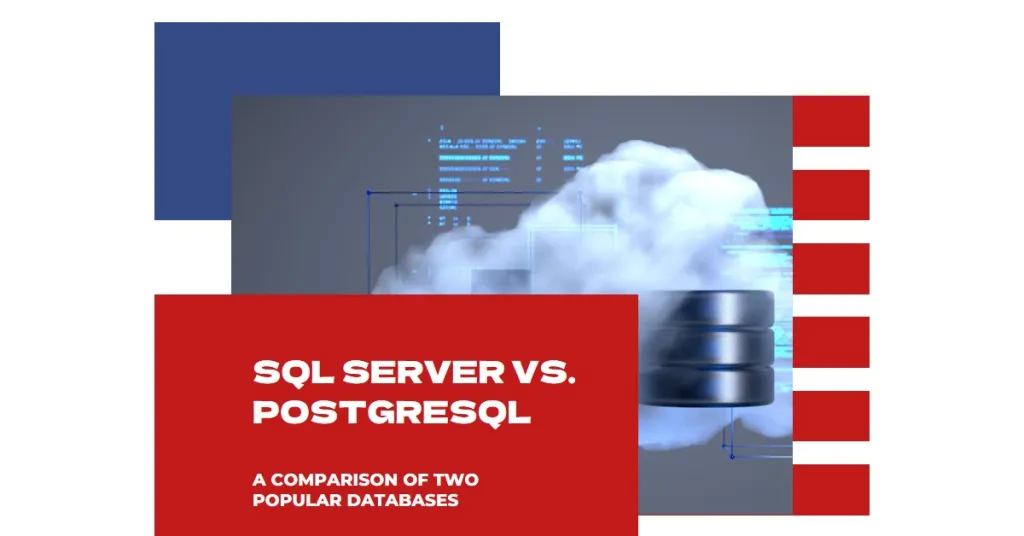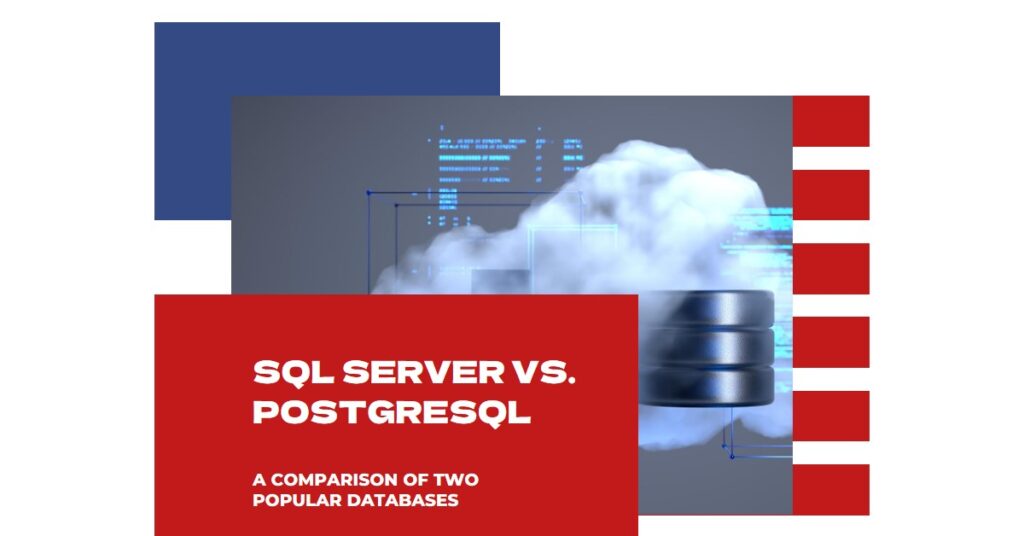SQL Server vs PostgreSQL: How to Choose the Right Database for Your Project
If you are looking for a reliable and powerful database management system for your applications, you might be wondering whether to choose SQL Server or PostgreSQL. Both are popular and widely used SQL-based systems that offer many features and benefits for different use cases. However, they also have some key differences that you should consider before making a decision.
In this article, we will compare SQL Server and PostgreSQL in terms of their history, features, advantages, disadvantages, performance, scalability, security, and compatibility. We will also provide some tips on how to decide which one is the best fit for your project based on your requirements and preferences.
A Brief History of SQL Server and PostgreSQL
SQL Server is a proprietary database system developed by Microsoft. It was first released in 1989 as a joint project with Sybase and Ashton-Tate. Since then, it has evolved into a comprehensive platform that supports various data warehousing, business intelligence, transaction processing, data analytics, and machine learning services.
SQL Server has a row-based table structure that allows you to connect related data elements from different tables without having to store data multiple times in a database. It also supports various data types, such as XML, JSON, spatial, temporal, and graph data.
PostgreSQL is an open-source database system that originated from the Postgres project at the University of California, Berkeley. It was first released in 1996 as an extension of the Ingres database system. Since then, it has grown into a robust and versatile system that supports both relational (SQL) and non-relational (JSON) querying.
PostgreSQL is also known for its extensibility and customizability. You can create your own data types, functions, operators, indexes, and languages without having to recompile the database. You can also use various extensions to enhance the functionality of PostgreSQL, such as PostGIS for geospatial data, PL/Python for Python scripting, and pgAdmin for graphical administration.
Features of SQL Server and PostgreSQL
Both SQL Server and PostgreSQL share many core features that make them suitable for managing and querying enormous amounts of data. Some of these features are:
- ACID compliance: Both systems ensure the atomicity, consistency, isolation, and durability of transactions.
- SQL support: Both systems support the standard SQL language for creating, manipulating, and retrieving data from tables.
- Indexing: Both systems allow you to create indexes on columns or expressions to speed up queries and enforce constraints.
- Views: Both systems allow you to create views that are virtual tables based on queries.
- Stored procedures: Both systems allow you to create stored procedures that are precompiled sets of SQL statements that can be executed with parameters.
- Triggers: Both systems allow you to create triggers that are actions that are executed automatically when certain events occur in the database.
- Foreign keys: Both systems allow you to create foreign keys that are constraints that link columns in different tables based on a common value.
- Subqueries: Both systems allow you to use subqueries that are queries nested within other queries.
- Joins: Both systems allow you to use joins that are operations that combine rows from two or more tables based on a common condition.
However, there are also some features that differentiate SQL Server and PostgreSQL in terms of their capabilities and functionalities.
Some of these features are:
- Data types: PostgreSQL supports more data types than SQL Server, such as arrays, ranges, enums, composite types, user-defined types, and geometric types. SQL Server supports some data types that PostgreSQL does not, such as hierarchyid, sql_variant, and table-valued parameters.
- Extensions: PostgreSQL supports more extensions than SQL Server that add additional features and functionalities to the database. For example, PostGIS adds support for geospatial data and operations, pgcrypto adds support for encryption and hashing functions, and hstore adds support for key-value pairs. SQL Server supports some extensions that PostgreSQL does not, such as PolyBase for querying external data sources like Hadoop or Azure Blob Storage.
- Partitioning: PostgreSQL supports more partitioning methods than SQL Server that allow you to divide large tables into smaller ones for better performance and management. For example, PostgreSQL supports range partitioning (based on a continuous range of values), list partitioning (based on a discrete list of values), hash partitioning (based on a hash function), and composite partitioning (based on a combination of methods). SQL Server supports only range partitioning (based on a continuous range of values) and hash partitioning (based on a hash function).
- Replication: PostgreSQL supports more replication methods than SQL Server that allow you to copy data from one database server to another for backup or load balancing purposes. For example, PostgreSQL supports logical replication (based on changes in individual rows), physical replication (based on changes in disk blocks), streaming replication (based on continuous transfer of changes), and logical decoding (based on extracting changes from the write-ahead log). SQL Server supports only transactional replication (based on changes in individual transactions), snapshot replication (based on periodic snapshots of data), and merge replication (based on merging changes from multiple sources).
- Full-text search: PostgreSQL supports more full-text search features than SQL Server that allow you to perform complex text queries on natural language data. For example, PostgreSQL supports stemming (reducing words to their root form), lemmatization (reducing words to their canonical form), synonyms (using alternative words with the same meaning), thesaurus (using related words with different meanings), and phrase search (matching exact sequences of words). SQL Server supports only stemming, synonyms, and phrase search.
Advantages and Disadvantages of SQL Server and PostgreSQL
Both SQL Server and PostgreSQL have their own advantages and disadvantages that you should weigh before choosing one for your project. Some of these are:
- Cost: PostgreSQL is free and open-source, which means you do not have to pay any licensing fees or royalties to use it. You can also modify and distribute it as you wish. SQL Server is proprietary and licensed by Microsoft, which means you have to pay for the edition and features you want to use. You also have to abide by the terms and conditions of the license agreement.
- Support: PostgreSQL has a large and active community of users and developers who provide support and assistance through various channels, such as mailing lists, forums, blogs, wikis, and IRC. You can also find many online resources, tutorials, books, and courses on PostgreSQL. SQL Server has a dedicated support team from Microsoft who provide technical support and assistance through various channels, such as phone, email, chat, web, and forums. You can also find many online resources, tutorials, books, and courses on SQL Server.
- Compatibility: PostgreSQL is compatible with most operating systems, such as Linux, Windows, macOS, FreeBSD, Solaris, and others. You can also use PostgreSQL with most programming languages, such as C#, Java, Python, Ruby, PHP, Perl, and others. You can also use PostgreSQL with most frameworks and tools, such as Django, Rails, Laravel, Hibernate, and others. SQL Server is compatible only with Windows operating system. Also, consider that you can containerize your database too. You can also use SQL Server with most programming languages, such as C#, Java, Python, Ruby, PHP, Perl, and others. You can also use SQL Server with most frameworks and tools, such as .NET, Entity Framework, Spring Boot, and others.
- Performance: PostgreSQL is known for its high performance and scalability when handling complex queries and large workloads. It also supports various optimization techniques, such as parallel query processing, just-in-time compilation, and index-only scans. SQL Server is also known for its high performance and scalability when handling large workloads. It also supports various optimization techniques, such as query store, adaptive query processing, and columnstore indexes.
- Security: PostgreSQL supports various security features, such as encryption at rest and in transit, role-based access control, row-level security, audit logging, and certificate authentication. SQL Server also supports various security features, such as encryption at rest and in transit, role-based access control, row-level security, audit logging, and transparent data encryption.
How to Choose Between SQL Server and PostgreSQL
There is no definitive answer to which database system is better than the other. It depends on your project requirements, preferences,
and budget. However, here are some general guidelines that can help you make an informed decision:
Choose PostgreSQL if you want a free and open-source database system that supports both relational and non-relational data types, has more extensibility and customizability options,
has more partitioning and replication methods, has more full-text search features,
and is compatible with most operating systems.
Choose SQL Server if you want a proprietary and licensed database system that has more data warehousing, business intelligence, data analytics, and machine learning services, has more extensions for querying external data sources, has more dedicated support from Microsoft, and is compatible only with Windows operating system.
Of course, these are not the only factors that you should consider when choosing a database system. You should also evaluate other aspects such as ease of use, learning curve, documentation quality, availability of tools, community size, and future development plans.
Ultimately, the best way to choose between SQL Server and PostgreSQL is to try them out yourself. You can download and install both systems on your local machine or use cloud-based services that offer them as a service. You can then test them with your own data and queries
and compare their performance, functionality, and usability.
We hope this article has helped you understand the differences between SQL Server and PostgreSQL and how to choose the right database for your project.



